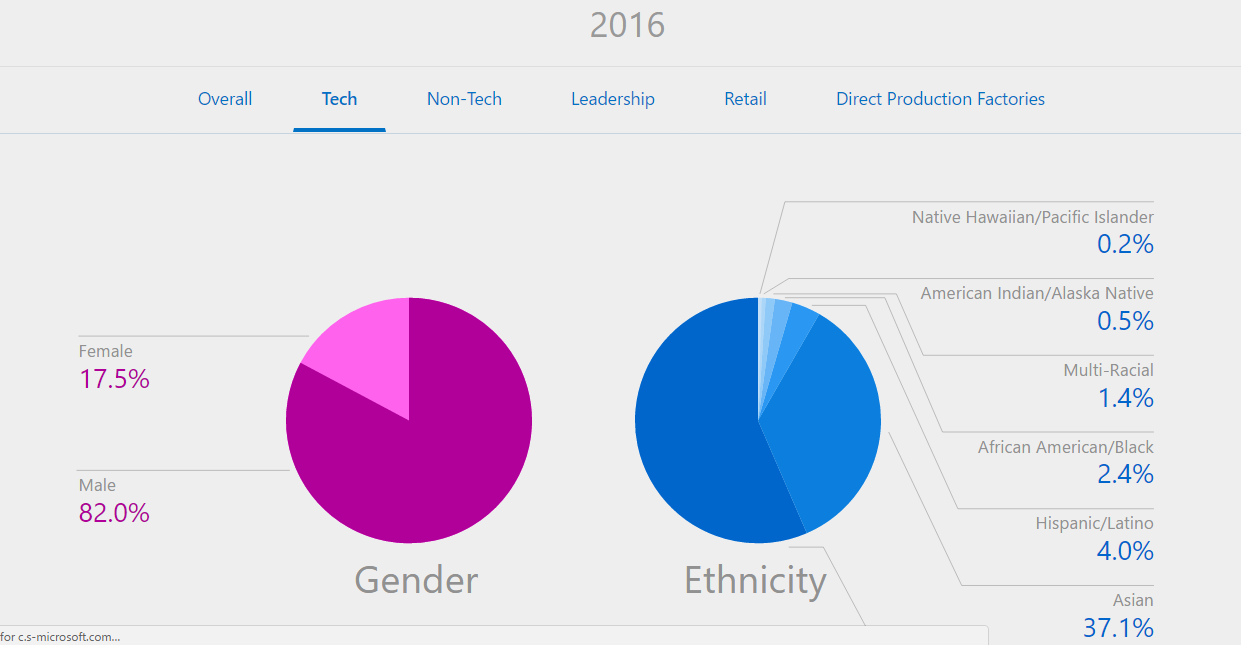Finding talent is hard work, and finding technology talent is even harder. And if you are hunting for talent in forward technologies like cloud computing, then good luck to you! But there’s another problem that’s creeping into the world of cloud computing, from a hiring perspective.
A recent survey conducted by Microsoft has revealed that the cloud skills gender gap in the U.K. is already at an alarming level.
Microsoft Cloud Skills Report: Closing the Cloud Skills Chasm has found that the gender mix among cloud teams was 80% male and 20% female. That’s not even the worst of it. 35% of the survey respondents said that they didn’t plan to change the imbalance. We believe the root cause for such a response is the lack of female talent in the market, specifically in cloud computing and related technology segments.
What’s even more disturbing is that Microsoft also found that one fifth of organisations with 250 to less than 1000 employees had no female staff at all. The 80/20 ratio of gender mix in the cloud computing industry is far lower than the 26% held by women in the technology sector in United States.
“According to the Hays Global Skills Index, last year marked the fifth consecutive year of a rising UK skills shortage, particularly in the technical engineering and specialist technology roles into which cloud skills fall,” Cindy Rose, Microsoft UK Chief Executive, told the Microsoft Tech Summit in Birmingham on Monday.
The gender gap in the tech industry is nothing new, but it’s been going on for so long that a lot of large companies don’t even take the effort to change the status quo. Admittedly, doing that will require a lot of resources, but not a lot of companies are doing anything about it despite knowing full well that narrowing down the gender gap usually increases workforce performance.
“A recent study by McKinsey & Company suggests that narrowing the gender gap could add as much as $12 trillion to the global gross domestic product (GDP) by 2025, equivalent to 11% of the world’s GDP. A global study by the Peterson Institute for International Economics and EY suggests that an organisation with 30% female leadership can increase profitability by 15%.” (From the Microsoft report)
Source: Microsoft
Even Microsoft, which did the survey, has a lot more work to do to improve its workforce mix. In 2016, women accounted for 25.8% of the tech giants’ overall workforce, but when you drill down to technology, women held a mere 17.5% of positions. In non-technology positions it increased to 39.4%.
That there’s a glaring gender gap staring us in the face is obvious. Even if you look at it from a workforce efficiency angle, it’s clear that not enough is being done.
Read Microsoft’s full report here.
Thanks for reading our work! We invite you to check out our Essentials of Cloud Computing page, which covers the basics of cloud computing, its components, various deployment models, historical, current and forecast data for the cloud computing industry, and even a glossary of cloud computing terms.




